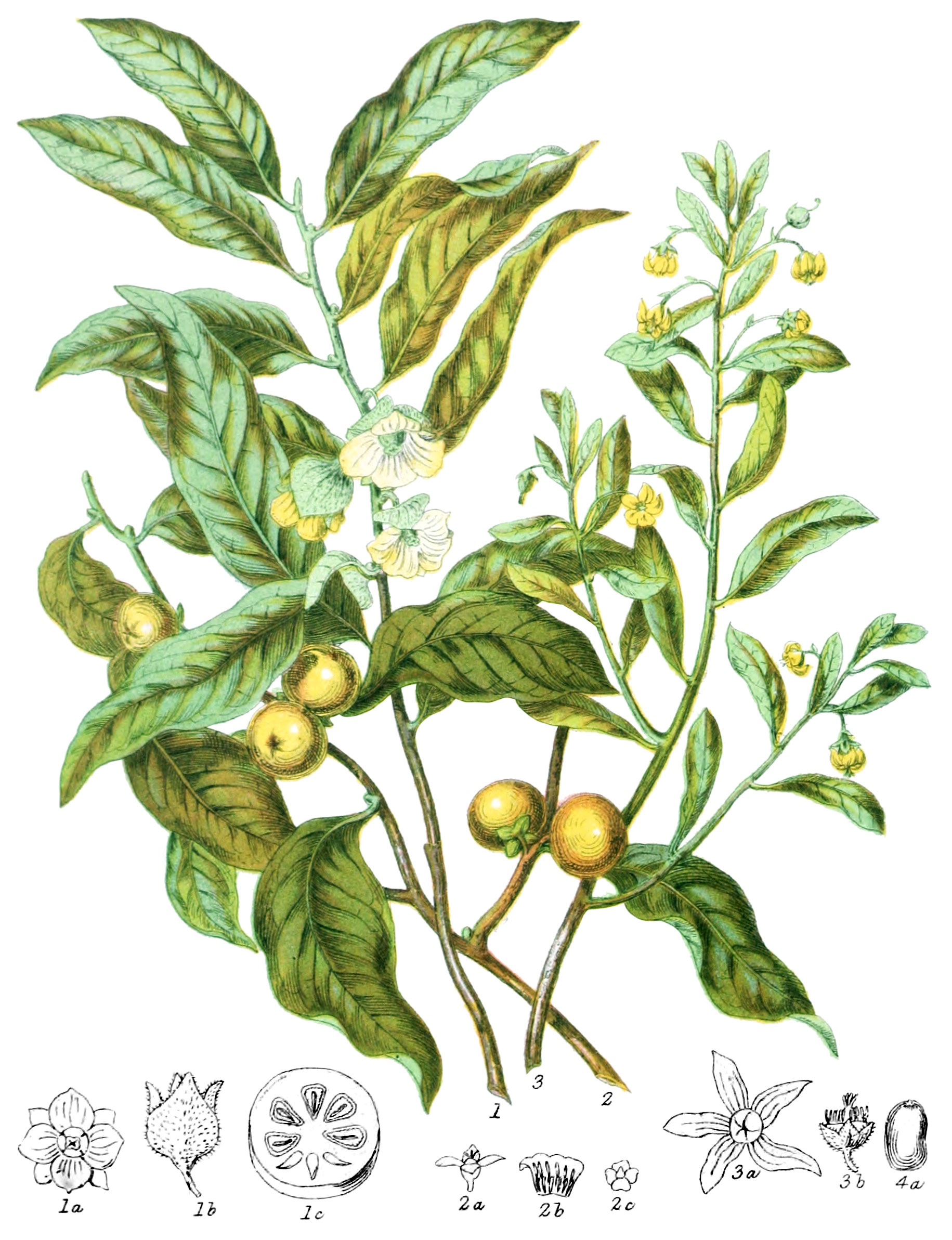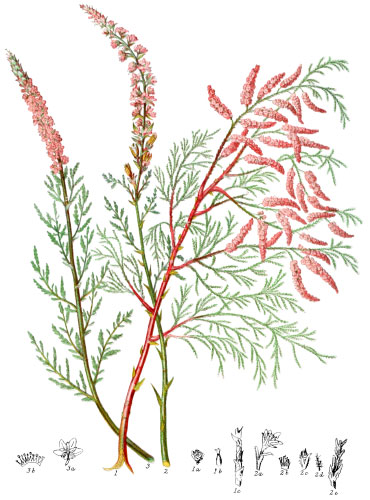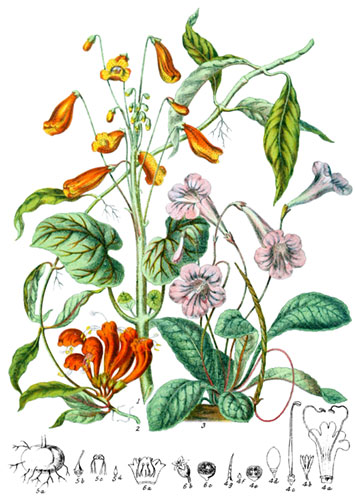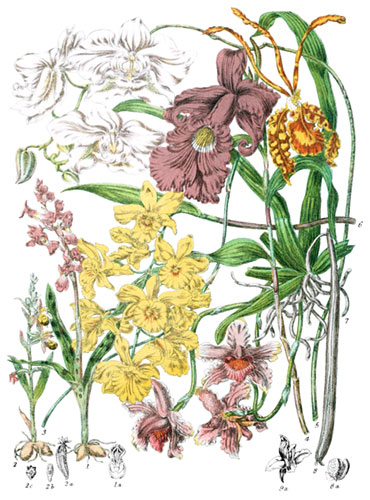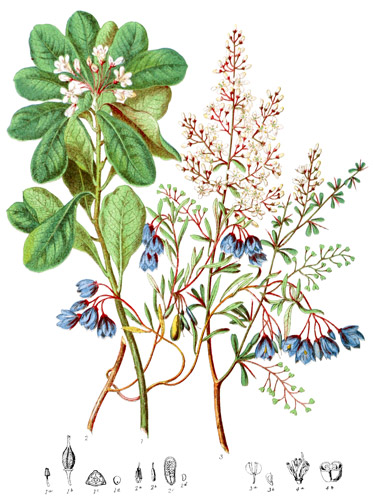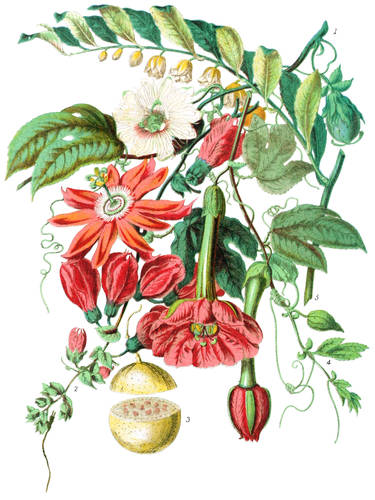Key characteristics
Trees and shrubs, with heavy, solid wood, and without milky juice. The leaves are alternate, without stipules, entire at the edges and leathery. The flowers grow at the base of the leaf-stalks; they are seldom complete, the stamens being imperfect in some, the pistil and ovary in others. The calyx has from three to seven divisions. The corolla is of one petal, attached to the base of the ovary, regularly divided into three to seven parts, deciduous, somewhat leathery, usually downy on the exterior, and smooth within. The stamens arise from the corolla, or from the base of the ovary, are of equal number with the segments of the corolla, and alternate with them, or are twice or four times as many; sometimes fixed in pairs at the base of the lobes of the corolla. The filaments are sometimes simple, sometimes double, both the divisions bearing anthers attached by their base, lanceolate, two-celled, gaping lengthwise, sometimes bearded. The ovary is without a disk, many-celled, each cell having one or two ovules, pendulous from the top. The styles is divided, seldom simple; the stigmas divided or simple. The fruit is fleshy, round or oval; the seeds have a membranous covering, a few only ripen; they contain albumen.
This Tribe is allied to Sapotaceæ, but differs in the dense wood and watery juice. In some points of structure it has affinity with Oleaceæ.
Hard wood and eatable fruits are the principal characteristics of the trees.
Select plants in this order
Not all plants listed are illustrated and not all plants illustrated are listed.
- Diospyros, from the Greek, the fruit of heaven, or pear of Jove, is a genus known to the ancients, and of considerable value in modern times in the species Ebony, D. Ebenum, which has been adopted as the name of the tribe. It is abundant in Madagascar, the Mauritius, and Ceylon, from whence large supplies are imported into Europe; the centre of the trunk, or heart-wood, is the most valuable portion, from its close texture, deep black colour, and capability of fine polish.
- D. Ebenaster yields likewise an excellent wood for ornamental purposes, occasionally marked with white and brown lines.
- D. embryopteris (1) is also named glutinosa, from the very glutinous nature of the fruit, used in Bengal to protect the outside of boats from decay; it is a globular berry, with a yellow pulp, of astringent quality, but eaten by the natives in the valleys of the Circar mountains, where it grows; the wood is hard, and employed for various purposes. The fruit of several species is considered eatable when mature, although it is generally bitter before ripening; that of D. Kaki is preserved as a sweatmeat in China, and is sometimes sent to England.
- D. Lotus (2) bears a sweet and slightly astringent fruit, which was formerly supposed to be that eaten by the ancient inhabitants of the north of Africa, the Lotophagi, but that is since determined to be Zizyphus Lotus.
- D. virginianum, the American Date-plum, has a white brittle wood, with a dark brown bark, used medicinally in North America, the fruit is about the size, and has the same firm texture, as the Date.
- D. discolor is the Mabolo fruit of the Philippine Isles.
- D. melanoxylon of Coromandel yields a wood equal in equality to Ebony; and the fruit is esteemed by the natives, as is also that of D. racemosa, tomentosa, and others.
- D. Roylei is abundant in the Ghauts of Central India.
- D. obovata belongs to the West Indies.
- Diospyros belongs to the lowest zone of the Peak of Teneriffe, from the shore to the height of 2000 feet. It exists also in several species in Hong Kong.
- Royena was named by Linnæus in remembrance of Adrian von Royen, who, as well as his son David, was a professor of botany at Leyden. It is a genus nearly confined to the Cape of Good Hope.
- R. pubescens (3) is a shrub about three feet high, with a grey bark; the fruit, when ripe, is about an inch in diameter, the enlarged calyx remains reflexed from it. The rind of the fruit is leathery, the pulp of a fleshy nature.
- Maba buxifolia is a low shrub yielding well-flavoured eatable berries, relished by the natives of Tongatabou, one of the coral isles of Polynesia, in 20° of south latitude. The wood is dark-coloured and hard, available for durable purposes, as far as the size admits.
Locations
This Tribe chiefly belongs to the Tropics of India; a very few species extend northwards as far as Europe, in Italy and Switzerland.
Legend
- Diospyros Embryopteris, Viscid-fruited Date-plumb. Bengal.
- Flower.
- Calyx.
- Section of Fruit.
- Diospyros Lotus, European Date-plum. Italy.
- Calyx and Pistil.
- Petal and Stamens.
- Glands and imperfect Pistil.
- Royena pubescens, Downy Royena. Cape of Good Hope.
- Calyx and Fruit.
- Calyx, Stamens, and Pistil.
-
- Diospyros melanoxylon. Seed. East Indies.
Explore more
Posters
Decorate your walls with colorful detailed posters based on Elizabeth Twining’s beautiful two-volume set from 1868.
Puzzles
Challenge yourself or someone else to assemble a puzzle of all 160 botanical illustrations.
